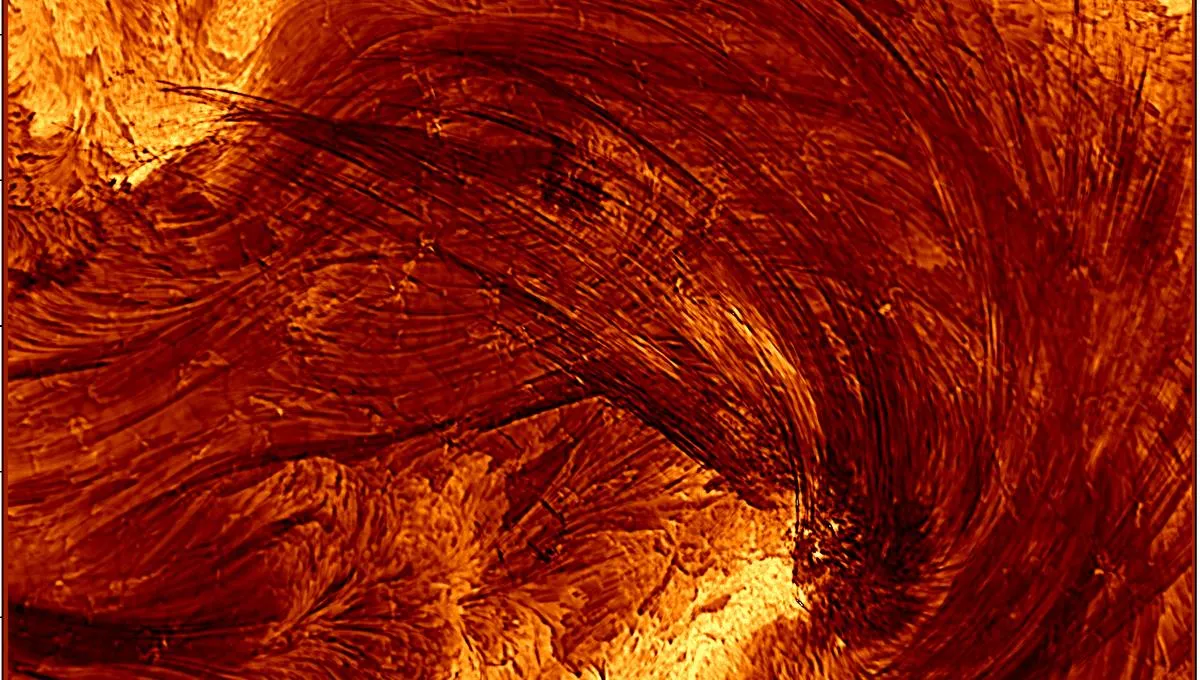
The solar flare observed on August 8, 2024, was an impressive X1.3-class flare, marking a significant event in solar activity as the Sun was approaching its maximum phase. Occurring at 20:12 UT, this solar phenomenon was captured by the Inouye Solar Telescope, showcasing its potential as a cutting-edge instrument in solar observation.
At the heart of this solar flare are coronal loops, which are arcs of plasma that align with the Sun's magnetic field lines. These loops can twist and snap, releasing magnetic energy that heats the surrounding plasma to millions of degrees, resulting in bright solar flares. Until recently, the precise dimensions of these coronal loops remained largely unknown. The latest findings indicate that these loops have an average width of 48.2 kilometers (30 miles), with some possibly as narrow as 21 kilometers (13 miles).
“This is the first time the Inouye Solar Telescope has ever observed an X-class flare,” stated Cole Tamburri, the lead author of the study and a graduate researcher at the University of Colorado Boulder. “These flares are among the most energetic events produced by our star, and we were fortunate to capture this one under optimal observing conditions.” The observations made by the Inouye Solar Telescope during the solar maximum have proven invaluable, providing unprecedented insights into solar dynamics.
Tamburri further explained, “Before Inouye, we could only imagine what this scale looked like. Now we can see it directly. These are the smallest coronal loops ever imaged on the Sun.” The ability of this advanced telescope to visualize these loops represents a breakthrough in solar physics, allowing scientists to witness phenomena that were previously theoretical.
Maria Kazachenko, a co-author of the study and a scientist at the National Solar Observatory, expressed her excitement, stating, “Knowing a telescope can theoretically do something is one thing. Actually watching it perform at that limit is exhilarating.” The observations from the Inouye Solar Telescope provide critical insights into the behavior of these magnetic arcs, as illustrated in a video that has been sped up 100 times for better visualization.
The latest observations suggest that the images of the loops represent singular structures rather than clusters of smaller magnetic entities. “If that’s the case, we’re not just resolving bundles of loops; we’re resolving individual loops for the first time,” Tamburri emphasized. “It’s like going from seeing a forest to suddenly seeing every single tree.”
“We’re finally peering into the spatial scales we’ve been speculating about for years,” Tamburri added. “This opens the door to studying not just their size, but their shapes, their evolution, and even the scales where magnetic reconnection — the process driving solar flares — occurs.” Such advancements in solar observation will undoubtedly enhance our understanding of solar activity and its implications for space weather.